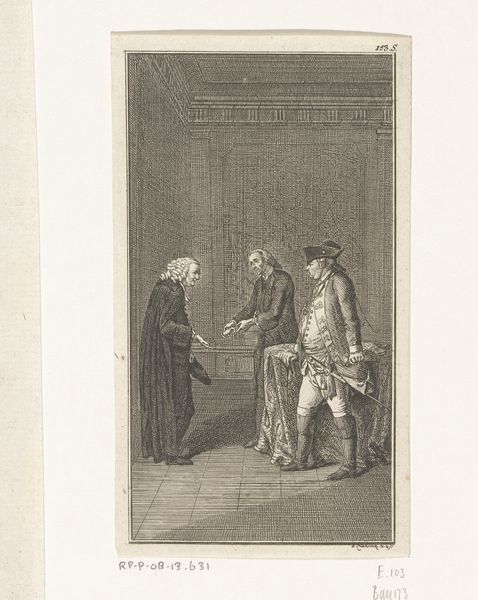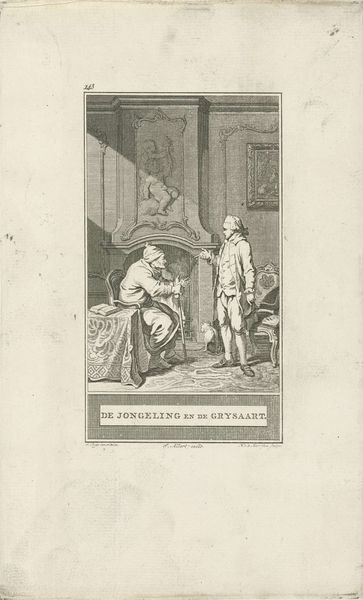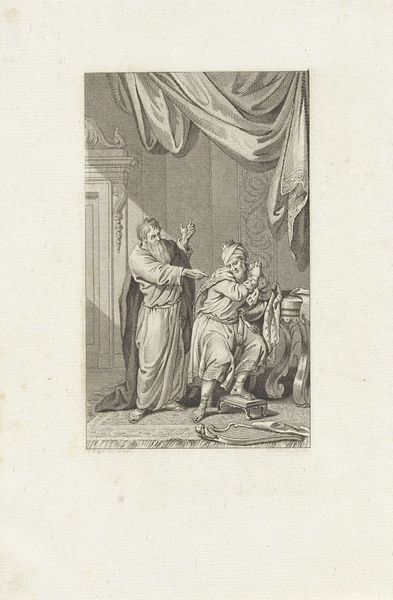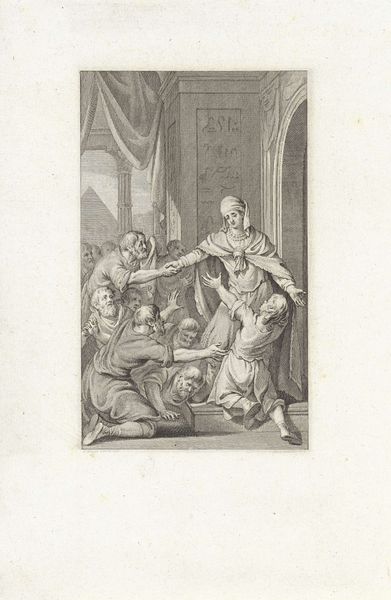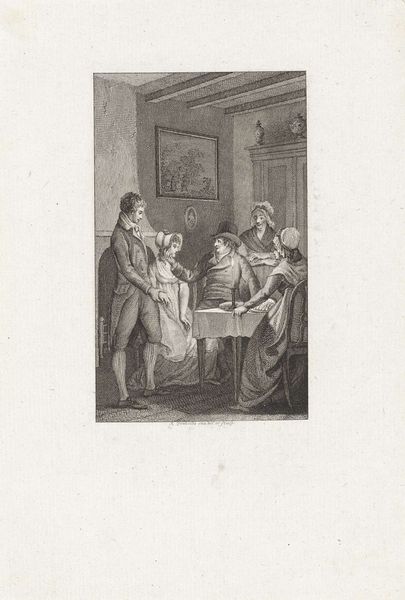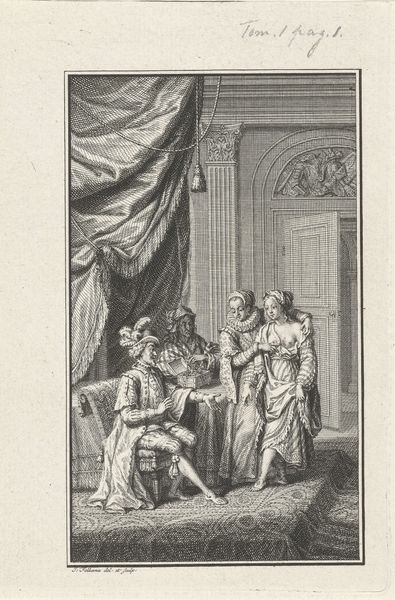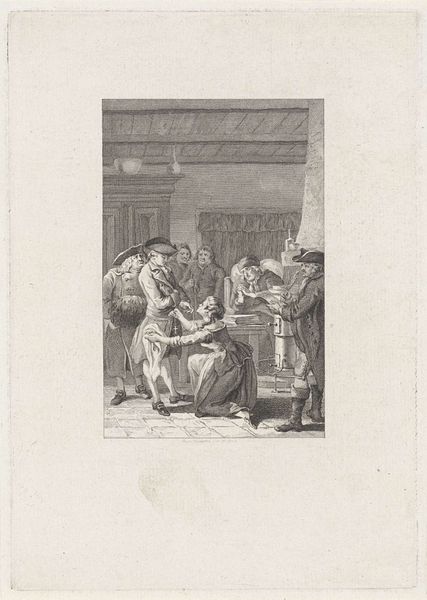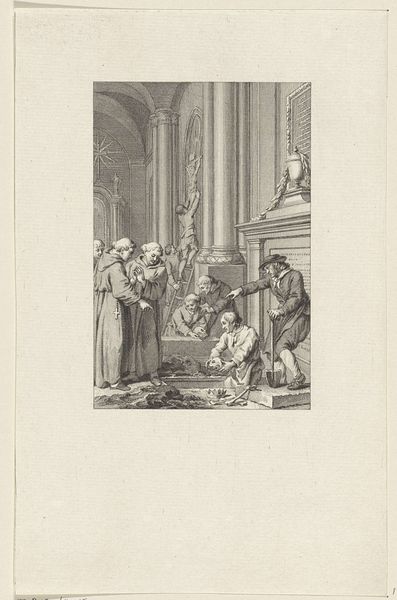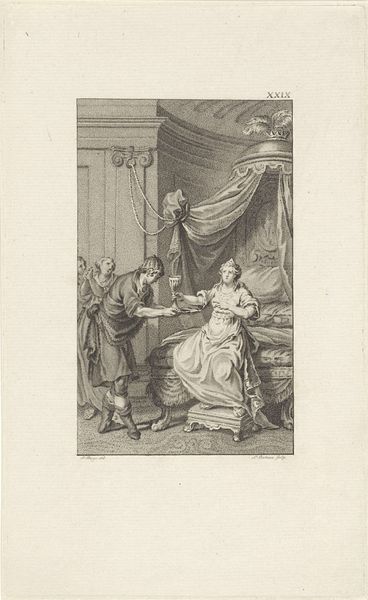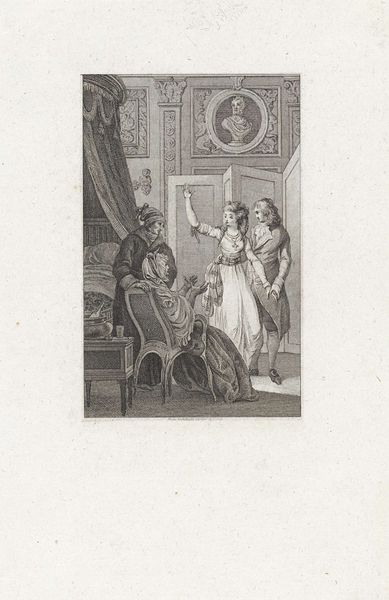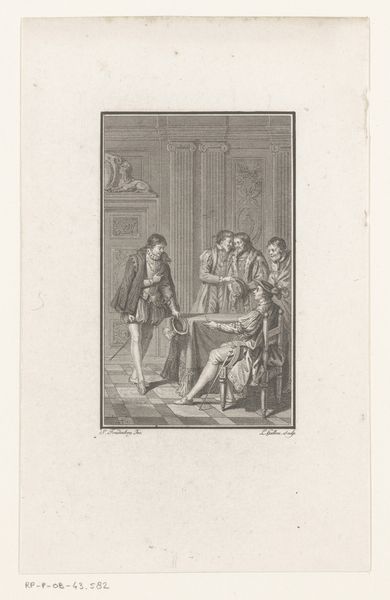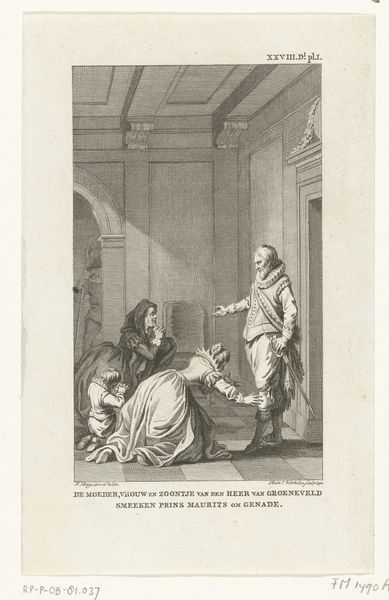
#
light pencil work
#
pencil sketch
#
old engraving style
#
personal sketchbook
#
idea generation sketch
#
sketchbook drawing
#
pencil work
#
storyboard and sketchbook work
#
cartoon carciture
#
sketchbook art
Dimensions: height 212 mm, width 134 mm
Copyright: Rijks Museum: Open Domain
Curator: Looking at this print, I'm immediately struck by its dramatic chiaroscuro, the strong contrast between light and shadow. It really sets a stage for... something intense. Editor: That's quite right. The artwork before us, "Cato en Ptolemaeus," created in 1799 by Ludwig Gottlieb Portman, offers just such a stage, reflecting the intense socio-political theater of the time. Curator: The composition, with the central figures almost facing off across that small table... what's the story being told here? It feels like a crucial negotiation, maybe? And who are those figures lurking in the background? Editor: The print depicts Cato the Younger and Ptolemy of Cyprus. Consider the broader context: this work arises amidst revolutionary fervor and Neoclassical ideals. The choice of Cato, a staunch defender of the Roman Republic against tyranny, as subject, isn't accidental. Curator: So, it’s not just a historical scene; it’s a political statement, filtered through classical history and, potentially, applied to the burgeoning calls for liberty? The presence of Ptolemy adds a layer, then. He’s seen as offering up his kingdom to Cato, right? Editor: Precisely. Ptolemy's perceived weakness, his willingness to cede power, would have resonated with contemporary anxieties about leadership and governance, particularly in light of revolutionary upheavals across Europe. Think about it: how does Portman use these historical figures to reflect upon contemporary events and political discourse? The light literally shining upon Cato reinforces his perceived righteousness. Curator: I'm also interested in the figures observing the two main actors. Are they intended to act as witnesses to history in ways that relate to modern society? To some extent, they resemble caricatures... Perhaps symbolizing broader skepticism regarding negotiations around wealth and power. How does Portman use their gazes to engage the viewer critically in what’s transpiring in this scenario? Editor: These secondary figures do contribute to that effect. Portman skillfully employs history to pose vital questions concerning power dynamics and moral fortitude during tumultuous periods. What implications are inherent in such portrayals considering debates on monarchy and democracy then unfolding? Curator: Food for thought. Thank you for elucidating that. This engraving, then, becomes a mirror reflecting both the past and the revolutionary present. Editor: Indeed. Art serving as both historical record and political commentary. Always layers to unpack, isn't there?
Comments
No comments
Be the first to comment and join the conversation on the ultimate creative platform.
